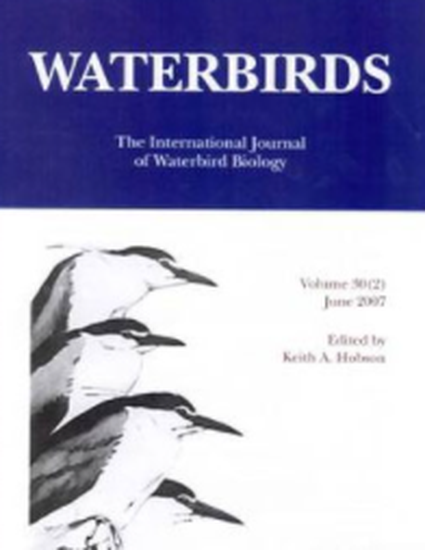
Article
Status Review of Chesapeake Bay Marsh Lands and Breeding Marsh Birds
Waterbirds
(2007)
Abstract
Emergent tidal marshes are a dominant feature of the Chesapeake Bay’s estuarine environment and account for an approximate 123,100 ha of the 185,870 ha (66%) of classified wetlands. Tidal marshes vary in salinity, structure, and plant composition according to their geographic position in the Bay. Chesapeake Bay marshes support breeding bird populations that are of regional or national conservation significance. Marsh bird communities vary with marsh type, geographic position, salinity, patch size, and landscape context. Marsh loss has been significant over the past two hundred years primarily as a result of urban, industrial, and agricultural development. Protective legislation enacted in the 1970s has slowed the rate of loss but marshes continue to be degraded and population of marsh birds continue to decline from the invasion of exotic species, ground predators, poor management practices, encroachment by development, and sea-level rise. Despite these concerns, there is still relatively little information on the population trends of most marsh birds or on the distribution of some of the Bay’s highest species of concern such as Black Rails (Laterallus jamaicensis), King Rails (Rallus elegans), Saltmarsh Sharp-tailed Sparrows (Ammospiza caudacuta), and Henslow’s Sparrows (Ammodramus henslowii). Marshes along the bay’s fringe, tributaries, and islands that currently support species at risk of extinction in the Bay are in immediate need of identification and protection. High marshes on the Delmarva peninsula, support greatest concentrations of species at risk and are marshes among the most at risk of loss and degradation. Management to reduce or abate threats to marsh birds is critical to their long term survival.
Disciplines
Publication Date
December, 2007
DOI
https://doi.org/10.1675/1524-4695(2007)030[0122:SROCBM]2.0.CO;2
Citation Information
Michael D. Wilson, David F. Brinker and Bryan Watts. "Status Review of Chesapeake Bay Marsh Lands and Breeding Marsh Birds" Waterbirds Vol. 30 Iss. SP1 (2007) p. 122 - 137 Available at: http://works.bepress.com/bryan-watts/272/
